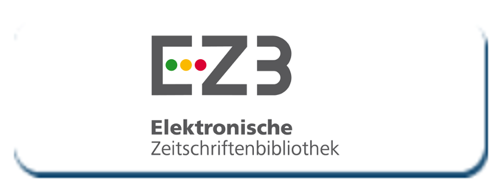Pathophysiological mechanisms of renal damage in obstructive uropathies as potential therapeutic targets: A literature review
DOI:
https://doi.org/10.5281/zenodo.8377677Keywords:
Biomarkers, Children, Chronic kidney disease, Renal fibrosis, Urinary tract obstructionAbstract
Obstructive uropathies are a group of conditions characterized by urinary tract blockages, leading to impaired urine flow and renal damage. This comprehensive literature review aims to explore the pathophysiological mechanisms underlying renal damage in obstructive uropathies and identify potential therapeutic targets for intervention. The review synthesizes current knowledge from a wide range of studies and provides an overview of the complex cellular and molecular processes involved in renal damage progression, including hemodynamic alterations, oxidative stress, interstitial inflammation, and tubulointerstitial fibrosis. Key players in the pathogenesis of renal damage, such as the renin-angiotensin-aldosterone system, reactive oxygen species, immune cells, and fibrogenic factors, are discussed in detail. Furthermore, potential therapeutic targets, including renin-angiotensin inhibitors, antioxidants, anti-inflammatory agents, and anti-fibrotic strategies, are identified based on preclinical and experimental studies. Additionally, emerging therapeutic modalities like mesenchymal stem cells and extracellular vesicles derived from MSCs are explored for their potential in attenuating renal damage and promoting tissue repair. Understanding the pathophysiological mechanisms and identifying potential therapeutic targets is crucial for the development of effective interventions to mitigate renal damage in obstructive uropathies, ultimately improving patient outcomes and quality of life. Further research and clinical trials are needed to translate these promising findings into clinical practice and address the unmet therapeutic needs in this patient population.
References
Papayan AV, Savenkova ND. "Clinical Nephrology in Childhood" published in St. Petersburg by "SOTIS" in 1997, pp: 718.
Ingelfiger JR, Kalantar-Zadeh K, Schaefer F. Averting the legacy of kidney disease—Focus on childhood. Saudi J Kidney Dis Transpl. 2016;27:219-26.
Humphreys BD. Mechanisms of Renal Fibrosis. Ann Rev Physiol. 2018;80:6.1-6.18.
Chevalier RL. Congenital urinary tract obstruction: the long view. Adv Chronic Kidney Dis. 2015;22(4):312-9.
Chevalier RL. The proximal tubule is the primary target of injury and progression of kidney disease: role of the glomerulotubular junction. Am J Physiol Renal Physiol. 2016;311:F145-F161.
Martínez-Klimova E, Aparicio-Trejo OE, Tapia E, Pedraza-Chaverri J. Unilateral Ureteral Obstruction as a Model to Investigate Fibrosis-Attenuating Treatments. Biomolecules. 2019;9(4):141.
Jackson L, Woodward M, Coward RJ. The molecular biology of pelvi-ureteric junction obstruction. Pediatr Nephrol. 2018;33(4):553-71.
Bagińska J, Korzeniecka-Kozerska A. Are Tubular Injury Markers NGAL and KIM-1 Useful in Pediatric Neurogenic Bladder? J Clin Med. 2021;10:2353.
Pope JC. Showalter PR, Milam DF, Brock JW. Intrapelvic pressure monitoring in the partially obstructed porcine kidney. Urology. 1994;44:565-71.
Holden D, George NJ, Rickards D, Barnard RJ, O’Reilly PH. Renal pelvic pressures in human chronic obstructive uropathy. Br J Urol. 1984;56:565-70.
Madsen MG. Urinary biomarkers in hydronephrosis. Dan Med J. 2013;60:B4582.
Bi-Cheng Liu, Tao-Tao Tang, Lin-Li Lv, Hui-Yao Lan. Renal tubule injury: a driving force toward chronic kidney disease. Kidney Int. 2018;93(3):568–79.
Nagalakshmi VK, Li M, Shah S, Gigliotti JC, Klibanov AL, Epstein FH, et al. Changes in cell fate determine the regenerative and functional capacity of the developing kidney before and after release of obstruction. Clin Sci (Lond). 2018;132(23):2519-45.
Chevalier RL, Kim A, Thornhill BA, Wolstenholme JT. Recovery following relief of unilateral ureteral obstruction in the neonatal rat. Kidney Int. 1999;55(3):793-807.
Thornhill BA, Forbes MS, Marcinko ES, Chevalier RL. Glomerulotubular disconnection in neonatal mice after relief of partial ureteral obstruction. Kidney Int. 2007;72(9):1103-12.
Thornhill BA, Burt LE, Chen C, Forbes MS, Chevalier RL. Variable chronic partial ureteral obstruction in the neonatal rat: a new model of ureteropelvic junction obstruction. Kidney Int. 2005;67(1):42-52.
Thornhill BA, Chevalier RL. Variable partial unilateral ureteral obstruction and its release in the neonatal and adult mouse. Methods Mol Biol. 2012;886:381-92.
Chevalier RL. Chronic partial ureteral obstruction and the developing kidney. Pediatr Radiol. 2008;38(1):S35-40.
Chevalier RL, Forbes MS, Thornhill BA. Ureteral obstruction as a model of renal interstitial fibrosis and obstructive nephropathy. Kidney Int. 2009;75:1145-52.
Chevalier RL, Thornhill BA, Forbes MS, Kiley SC. Mechanisms of renal injury and progression of renal disease in congenital obstructive nephropathy. Pediatr Nephrol. 2010;25(4):687-97.
Madsen MG, Nørregaard R, Frøkiær J, Jørgensen TM. Urinary biomarkers in prenatally diagnosed unilateral hydronephrosis. J Pediatr Urol. 2011;7(2):105-12.
Madsen MG, Nørregaard R, Stødkilde L, Christensen JH, Jørgensen TM, Frøkiær J. Urine and kidney cytokine profiles in experimental unilateral acute and chronic hydronephrosis. Scand J Urol Nephrol. 2012;46(2):91-6.
Liu BC, Tang TT, Lv LL. How Tubular Epithelial Cell Injury Contributes to Renal Fibrosis. Adv Exp Med Biol. 2019;1165:233-252.
Klein J, Gonzalez J, Miravete M, Caubet C, Chaaya R, Decramer S, et al. Congenital ureteropelvic junction obstruction: human disease and animal models. Int J Exp Pathol. 2011;92:168-92.
Chevalier RL. Obstructive nephropathy: towards bio- marker discovery and gene therapy. Nat Clin Pract Nephrol 2006;2:157-68.
Frokiaer J, Knudsen L, Nielsen AS, Pedersen EB, Djurhuus JC. Enhanced intrarenal angiotensin II generation in response to obstruction of the pig ureter. Am J Physiol 1992;263:F527-F533.
Hammad F.T. The long-term renal effects of short periods of unilateral ureteral obstruction Int J Physiol Pathophysiol Pharmacol. 2022;14(2):60-72.
Moody TE, Vaughn ED Jr, Gillenwater JY. Relationship between renal blood flow and ureteral pressure during 18 hours of total unilateral uretheral occlusion. Implications for changing sites of increased renal resistance. Invest Urol. 1975;13:246-51.
Cadnapaphornchai P, Aisenbrey G, McDonald KM, Burke TJ, Schrier RW. Prostaglandin-mediated hyperemia and renin-mediated hypertension during acute ureteral obstruction. Prostaglandins. 1978;16:965-71.
Aranda-Rivera AK, Cruz-Gregorio A, Aparicio-Trejo OE, Ortega-Lozano AJ, Pedraza-Chaverri J. Redox signaling pathways in unilateral ureteral obstruction (UUO)-induced renal fibrosis. Free Radic Biol Med. 2021;172:65-81.
Martínez-Klimova E, Aparicio-Trejo OE, Go´mez-Sierra T, Jim´enez-Uribe AP, Bellido B, Pedraza-Chaverri J. Mitochondrial dysfunction and endoplasmic reticulum stress in the promotion of fibrosis in obstructive nephropathy induced by unilateral ureteral obstruction. Biofactors. 2020;46(5):716-33.
Bhargava P, Schnellmann RG. Mitochondrial energetics in the kidney. Nat Rev Nephrol. 2017;13(10):629-46.
Chen J, Li D. Telbivudine attenuates UUO-induced renal fibrosis via TGF-β/Smad and NF-κB signaling. Int Immunopharmacol. 2018;55:1-8.
Fern RJ, Yesko CM, Thornhill BA, Kim HS, Smithies O, Chevalier RL. Reduced angiotensinogen expression attenuates renal interstitial fibrosis in obstructive nephropathy in mice. J Clin Invest. 1999;103(1):39-46.
Shen Y, Miao NJ, Xu JL, Gan XX, Xu D, Zhou L, et al. N-acetylcysteine alleviates angiotensin II-mediated renal fibrosis in mouse obstructed kidneys. Acta Pharmacol Sin. 2016;37(5):637-44.
Wang W, Huang XR, Canlas E, Oka K, Truong LD, Deng C, et al. Essential role of Smad3 in angiotensin II-induced vascular fibrosis. Circ Res. 2006;98(8):1032-9.
Nakatani T, Tamada S, Asai T, Iwai Y, Kim T, Tsujino T, et al. Role of renin-angiotensin system and nuclear factor-κb in the obstructed kidney of rats with unilateral ureteral obstruction. Jpn J Pharmacol. 2002;90:361-4.
Grande MT, Pérez-Barriocanal F, López-Novoa JM. Role of inflammation in túbulo-interstitial damage associated to obstructive nephropathy. J Inflamm. 2010;7:19.
Esteban V, Lorenzo O, Rupe´rez M, Suzuki Y, Mezzano S, Blanco J, et al. Angiotensin II, via AT1 and AT2 receptors and NF-kappaB pathway, regulates the inflammatory response in unilateral ureteral obstruction. J Am Soc Nephrol. 2004;15:1514-29.
Aparicio-Trejo OE, Tapia E, Sánchez-Lozada LG, Pedraza-Chaverri J. Mitochondrial bioenergetics, redoX state, dynamics and turnover alterations in renal mass reduction models of chronic kidney diseases and their possible implications in the progression of this illness. Pharmacol Res. 2018;135(1):1-11.
Bhatia D, Chung KP, Nakahira K, Patino E, Rice MC, Torres LK, et al. Mitophagy-dependent macrophage reprogramming protects against kidney fibrosis. JCI Insight. 2019;4:e132826.
Chevalier RL. Molecular and cellular pathophysiology of obstructive nephropathy. Pediatr Nephrol. 1999;13:612-9.
Chevalier RL. Prognostic factors and biomarkers of congenital obstructive nephropathy. Pediatr Nephrol. 2016;31:1411-20.
Murray PJ, Allen JE, Biswas SK, Fisher EA, Gilroy DW, Goerdt S, et al. Macrophage activation and polarization: nomenclature and experimental guidelines. Immunity. 2014;41(1):14-20.
Funes SC, Rios M, Escobar-Vera J, Kalergis AM. Implications of macrophage polarization in autoimmunity. Immunology. 2018;154(2):186-95.
Morozova OL, Budnik IA, Morozov DA, Mal'tseva LD, Mel'nikova YuA. Macrophages, a new target for anti-fibrotic therapy in children with obstructive uropathy. Pediatrics. 2015;94(3):182-7.
Duffield JS. Macrophages and immunologic inflammation of the kidney. Semin Nephrol. 2010;30(3):234-54.
Liu Y, Zou XB, Chai YF, Yao YM. Macrophage polarization in inflammatory diseases. Int J Biol Sci. 2014;10(5):520-9.
Lange-Sperandio B, Cachat F, Thornhill BA, Chevalier RL. Selectins mediate macrophage infiltration in obstructive nephropathy in newborn mice. Kidney Int. 2002;61:516-24.
Genovese F, Manresa AA, Leeming DJ, Karsdal MA, Boor P. The extracellular matrix in the kidney: a source of novel non-invasive biomarkers of kidney fibrosis? Fibrogenesis Tissue Repair. 2014;7:4.
Liu Y. Cellular and molecular mechanisms of renal fibrosis. Nat Rev Nephrol. 2011;7:684-96.
Kanzler S, Lohse AW, Keil A, Henninger J, Dienes HP, et al. TGF-β1 in liver fibrosis: an inducible transgenic mouse model to study liver fibrogenesis. Am J Physiol. 1999;276:G1059–G1068.
Lin SL, Kisseleva T, Brenner DA, Duffield JS. Pericytes and perivascular fibroblasts are the primary source of collagen-producing cells in obstructive fibrosis of the kidney. Am J Pathol. 2008;173(6):1617-27.
Prunotto M, Budd DC, Gabbiani G, Meier M, Formentini I, Hartmann G, Pomposiello S, Moll S. Epithelial-mesenchymal crosstalk alteration in kidney fibrosis. J Pathol. 2012;228(2):131-47.
Liu Y. New insights into epithelial-mesenchymal transition in kidney fibrosis. J Am Soc Nephrol. 2010;21(2):212-22.
LeBleu VS, Taduri G, O’Connell J, Teng Y, Cooke VG, Woda C, et al. Origin and function of myofibroblasts in kidney fibrosis. Nat Med. 2013;19:1047-53.
Tammaro A, Kers J, Scantlebery AML, Florquin S. Metabolic Flexibility and Innate Immunity in Renal Ischemia Reperfusion Injury: The Fine Balance Between Adaptive Repair and Tissue Degeneration. Front Immunol. 2020;11:1346.
Schelling JR. Tubular atrophy in the pathogenesis of chronic kidney disease progression. Pediatr Nephrol. 2016;31:693-706.
Radmayr C, Bogaert G, Dogan HS, Nijman JM, Rawashdeh YFH, Silay MS, et al. EAU Guidelines on Pediatric Urology. In: European Association of Urology (online). Uroweb, 2021 (vid. 2021-02-24). Available from: https://uroweb.org/guideline/paediatric-urology/
Onen A. Grading of Hydronephrosis: An Ongoing Challenge. Front Pediatr. 2020;8:458.
Nguyen HT, Herndon CD, Cooper C, Gatti J, Kirsch A, Kokorowski P, et al. The Society for Fetal Urology consensus statement on the evaluation and management of antenatal hydronephrosis. J Pediatr Urol. 2010;6(3):212-31.
Nordenström J, Koutozi G, Holmdahl G, Abrahamsson K, Sixt R, Sjöström S. Changes in differential renal function after pyeloplasty in infants and children. J Pediatr Urol. 2020;16(3):329.e1-329.e8.
Meng C, Gan L, Li K, Peng L, Li J, Yang J, et al. Comparison of external stents and DJ stents techniques for pediatric pyeloplasty: A systematic review and meta-analysis. Front Pediatr. 2022;10:933845.
Kaeidi A, Maleki M, Shamsizadeh A, Fatemi I, Hakimizadeh E, Hassanshahi J. The therapeutic approaches of renal recovery after relief of the unilateral ureteral obstruction: A comprehensive review. Iran J Basic Med Sci. 2020;23(11):1367-73.
Martínez-Klimova E, Aparicio-Trejo OE, Tapia E, Pedraza-Chaverri J. Unilateral Ureteral Obstruction as a Model to Investigate Fibrosis-Attenuating Treatments. Biomolecules. 2019;9(4):141.
Morozova OL, Budnik IA, Morozov DA, Mal'tseva LD, Mel'nikova YuA. Macrophages, a new target for anti-fibrotic therapy in children with obstructive uropathy. Pediatrics. 2015;94:182-7.
Chen F, Chen N, Xia C, Wang H, Shao L, Zhou C, et al. Mesenchymal Stem Cell Therapy in Kidney Diseases: Potential and Challenges. Cell Transplant. 2023;32:1-23.
Li JK, Yang C, Su Y, Luo JC, Luo MH, Huang DL, et al. Mesenchymal Stem Cell-Derived Extracellular Vesicles: A Potential Therapeutic Strategy for Acute Kidney Injury. Front Immunol. 2021;12:684496.
Tan W, Wang Y, Dai H, Deng J, Wu Z, Lin L, et al. Potential Therapeutic Strategies for Renal Fibrosis: Cordyceps and Related Products. Front Pharmacol. 2022;13:932172.
Bai X, Nie P, Lou Y, Zhu Y, Jiang S, Li B, et al. Pirfenidone Is a Renal Protective Drug: Mechanisms, Signaling Pathways, and Preclinical Evidence. Eur J Pharmacol. 2021;911:174503.
Kianfar T, Kadkhodaee M, Seifi B, Abdia A, Adelipour M, Pishkenari BH, et al. The effect of tannic acid on renal renin-angiotensin signaling pathway in a model of unilateral ureteral obstruction in male Wistar rats. Naunyn Schmiedebergs Arch Pharmacol. 2023. doi: 10.1007/s00210-023-02548-9.
Kim S, Kim SJ, Yoon HE, Chung S, Choi BS, Park CW, et al. Fimasartan, a Novel Angiotensin-Receptor Blocker, Protects against Renal Inflammation and Fibrosis in Mice with Unilateral Ureteral Obstruction: the Possible Role of Nrf2. Int J Med Sci. 2015;12(11):891-904.
Downloads
Published
How to Cite
Issue
Section
License
Copyright (c) 2023 Journal of Clinical Trials and Experimental Investigations

This work is licensed under a Creative Commons Attribution 4.0 International License.
![]() The journal is licensed under a Attribution4.0 International (CC BY 4.0).
The journal is licensed under a Attribution4.0 International (CC BY 4.0).











